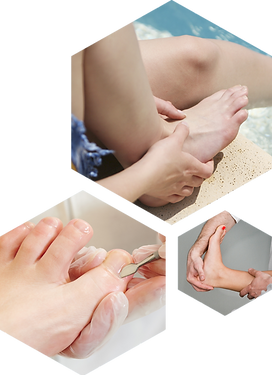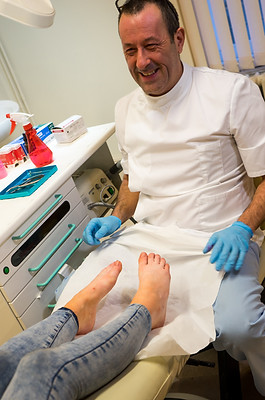BIOMECHANICAL ASSESSMENTS
WHAT IS BIOMECHANICS?
Biomechanics is the study of the movement of the bones, joints and muscles and how they affect our walking, running and standing posture. The biomechanical assessment is carried out by one of our Health and Care Professions Council (HCPC) registered podiatrists who specialise in postural aches, pains and injuries. The assessment is complemented with state-of-the art high speed video gait analysis, which involves filming the whole of the body in slow motion from the front, side and back.

WHY WOULD I HAVE A BIOMECHANICAL ASSESSMENT?
Most people have a biomechanical assessment because they are experiencing pain within the lower limb. This pain can be anywhere from the back down into the feet. You do not have to have a specific sports injury, it may just be pain which is present when walking or doing a specific movement. People also attend for biomechanical assessment in an attempt to improve posture or prevent/reduce the risk of injury and following referral from another health professional such as a doctor, orthopaedic surgeon, physiotherapist.
GENERAL CONDITIONS COMMONLY TREATED INCLUDE:
-
Foot and heel pain such as plantar fasciitis
-
Ankle and Achilles problems
-
Shin splints and calf pain
-
Hip, knee pain and Back Pain
-
Sports Injuries such as Iliotibial band syndrome, shin splints
-
Postural problems, flat feet and leg length differences
-
Fatigue
WHAT IS THE COST OF A BIOMECHANICAL ASSESSMENT?
At Lomax Podiatry we offer different levels of assessment:
A) Premium biomechanical assessment with gait analysis of full body 1.5 hours / £175
For problems affecting the knee, hips and back or more complex problems
B) Standard biomechanical Assessment (gait analysis of foot only) 60 minutes / £120
For problems below the knee such as shin splints, foot and ankle pain
C) Consultation with our podiatrist 30 minutes / £50
Gait analysis not included but may be required at a later date.
If you are not sure whether you need a full biomechanical assessment, you are welcome to book in for a consultation with one of our podiatrists who will conduct a shorter consultation and advise about appropriate treatment plan, this may include a recommendation to book a biomechanical assessment if it is deemed necessary.


WHAT TYPE OF ASSESSMENT IS MOST SUITABLE FOR ME?
The standard biomechanical assessment is ideal for all individuals of any age who are keen to find out the cause of any postural pain, such as foot, knee, hip or back pain.
The premium biomechanical assessment is a more comprehensive assessment and allows our podiatrist to analyse the whole body in motion and identify simple – as well as more complex – issues that may not been seen in our basic assessment. It is well suited to all individuals who want to get to the bottom of any aches and pains and includes casual walkers, sports enthusiasts of all levels as well as athletes.
Many people who engage in sports also benefit from having a biomechanical assessment to identify any muscle weakness/ tightness and to keep injury free.
WHAT DOES AN ASSESSMENT INVOLVE?
A full medical history should be recorded with a specific taking of details of the injury or site of pain. It is also important for the podiatrist to know about any previous accidents, fractures and surgery.
A static standing assessment will look at your relaxed posture and alignment. A couch examination will involve analysis of the hips, knees, ankles and the joints in your feet including the muscles. The podiatrist will be looking at the range and quality of movement available comparing this to the opposing limb as well as to what we know to be normal for the general population.
Patients undergoing the assessment will be marked up on specific body parts such as knees, feet, back and hips. They will be asked to walk and sometimes run on our specialised Sprintex gait analysis treadmill barefooted and in shoes/ trainers. Compared to traditional gym treadmills, with a single belt which propels the body forward unnaturally, the Sprintex model has separate slats which recreate the natural motion of walking and running. As it can work in reverse, you can be filmed both from the front and back, as well as from the side.
The information obtained in the biomechanical assessment will be analysed by our podiatrist who will explain the likely cause of your injury and will then outline a treatment plan based on the findings of your assessment.
